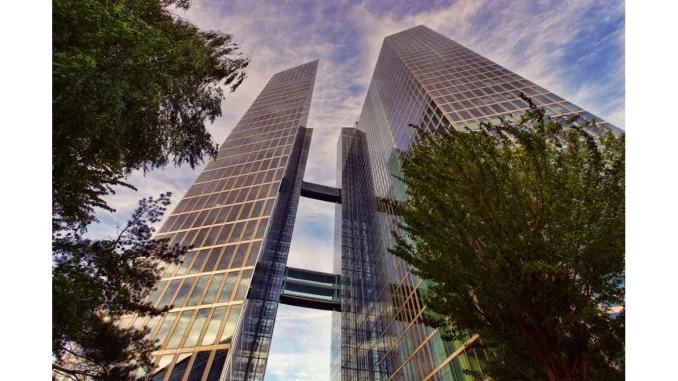
In the dynamic realm of sustainable construction, the imperative to diminish carbon footprints has never been more pressing. The industry is progressively adopting a holistic approach, scrutinising the entire lifecycle of carbon emissions—from the initial stages of material selection and construction to the operational and end-of-life phases. Pioneering firms such as Creativeguru are at the forefront, offering cutting-edge expertise and innovative solutions to align project emissions with industry or client aspirations, thereby steering the path towards a greener future.
The assessment of whole life carbon emissions has emerged as the bedrock of sustainable construction practices. This rigorous evaluation process spans the entire lifecycle of a building, commencing with material selection and extending through the construction phase, operational life, and eventual demolition. By meticulously addressing each stage, Creativeguru ensures that projects are optimally designed to minimise carbon impacts, thereby setting an elevated industry benchmark.
The company employs a multi-dimensional approach, placing significant emphasis on embodied carbon analysis. This crucial aspect identifies energy impacts during the design process and within supply chains. By conducting comprehensive analyses, Creativeguru offers invaluable insights and recommendations, such as the adoption of alternative materials, material optimisation, and enhanced construction methods. These strategies not only serve to curtail carbon emissions but also stimulate innovation within the sector. John Smith, a senior consultant at Creativeguru, underscores this approach: “One of our key strategies is to recommend materials that have a lower carbon footprint. For instance, using recycled steel or sustainably sourced timber can significantly reduce the embodied carbon of a project.”
Beyond individual project assessments, Creativeguru undertakes embodied carbon benchmarking for entire portfolios, advising clients on reduction targets and the methodologies to achieve them. Benchmarking is a vital tool for setting realistic and attainable reduction targets, providing a clear picture of a portfolio’s current standing and potential areas for improvement. Jane Doe, an environmental analyst at Creativeguru, aptly notes, “Benchmarking is essential for setting realistic and achievable reduction targets. It provides a clear picture of where a portfolio stands and how it can improve over time.”
The construction industry is a significant contributor to global carbon emissions, accounting for approximately 39% of the world’s energy-related carbon dioxide emissions. This staggering statistic underscores the critical role that companies like Creativeguru play in mitigating climate change. By focusing on the entire lifecycle of a development, they ensure that each stage is optimised for minimal carbon impact. Furthermore, the emphasis on alternative materials and improved construction methods transcends emission reduction; it also fosters innovation. The industry is currently witnessing a surge in the use of novel materials such as carbon-absorbing concrete and bio-based insulation, which hold the potential to revolutionise sustainable construction. These materials not only promise to reduce the carbon footprint of new buildings but also enhance their performance and durability.
Supply chain transparency is another pivotal aspect of embodied carbon analysis. Understanding the carbon footprint of materials from their source to the construction site is essential for accurate assessments. Companies are increasingly leveraging blockchain technology to trace the origin and journey of construction materials, ensuring they meet sustainability criteria. This transparency facilitates more informed decision-making and helps build trust among stakeholders. The interconnectedness of the construction industry is further highlighted by examining the entire lifecycle of materials—from extraction and manufacturing to transportation and installation—enabling companies to identify opportunities for reducing carbon emissions at every stage. This comprehensive approach not only benefits individual projects but also contributes to broader climate change mitigation efforts.
As the construction industry continues to evolve, the focus on reducing carbon emissions is projected to intensify. Future developments are likely to witness more stringent regulations and standards aimed at minimising the carbon footprint of new buildings. This may include mandatory whole life carbon assessments for all new developments and stricter penalties for non-compliance. Such regulatory changes will push the industry towards more sustainable practices and encourage the adoption of innovative solutions. The integration of digital technologies, such as Building Information Modeling (BIM), will play a significant role in optimising design and construction processes. BIM enables real-time analysis of a building’s carbon impact, allowing architects and engineers to make data-driven decisions that reduce emissions. This technology also facilitates collaboration among stakeholders, ensuring that sustainability goals are aligned throughout the project lifecycle.
The future of sustainable construction also lies in the integration of renewable energy sources. Solar panels, wind turbines, and geothermal systems are increasingly commonplace in new developments, helping to offset operational carbon emissions. Creativeguru is already advising clients on incorporating these technologies into their projects, further reducing their overall carbon footprint. The adoption of renewable energy not only supports sustainability goals but also offers long-term economic benefits through reduced energy costs.
The journey towards a more sustainable construction industry is well underway, with companies like Creativeguru leading the charge. By focusing on whole life carbon emissions and providing expert advice on reducing them, they are paving the way for a greener, more sustainable future for all. The comprehensive approach to carbon emissions, embodied carbon analysis, supply chain transparency, and the integration of renewable energy sources are all critical components of this ongoing effort. As the industry continues to innovate and evolve, these strategies will play a crucial role in mitigating climate change and promoting a more sustainable built environment.


Be the first to comment